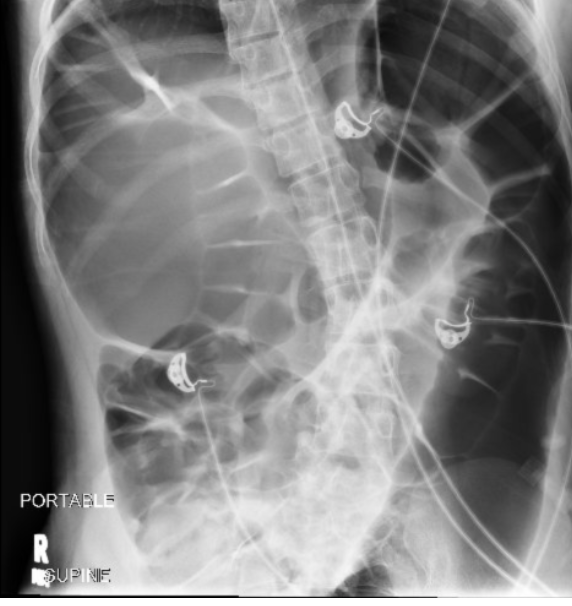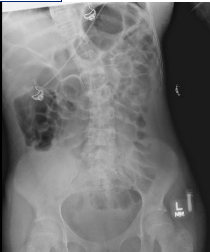Case Presentation: A 15-year-old female with past medical history of constipation, autism spectrum disorder (ASD), Marfanoid habitus, and scoliosis was admitted for six months of ongoing abdominal pain and distention. Abdominal Computed Tomography (CT) scan demonstrated diffuse gaseous colonic distension, measuring up to 10cm in diameter without evidence of obstruction. The patient was high risk for colonic perforation. Initial management included bowel rest, electrolyte correction, and decompressive colonoscopy with rectal tube placement. Preliminary workup included a rectal biopsy, which was positive for ganglion cells, therefore, ruling out Hirschsprung’s. Lumbar and thoracic Magnetic Resonance Imaging (MRI) were normal, excluding any neurological causes related to her scoliosis. After one week of persistent distention despite conservative management, the patient was trialed on a 1 milligram (mg) bolus of neostigmine followed by 1.5 mg the following day. The second bolus resulted in transient improvement on abdominal X-ray but with re-accumulation of air within 24 hours. It was then suspected that the etiology of her symptoms may be longstanding anal withholding, prompting treatment with anorectal botox injections. This resulted in significant improvement in her distention and she was discharged with a future plan for outpatient motility studies.
Discussion: This case represents an incidence of acute-on-chronic colonic pseudo-obstruction, which is characterized by symptoms of intestinal obstruction in the absence of a mechanical source. This is a rare diagnosis in the pediatric population, making treatment challenging as current recommendations are focused on adults. Initially, this case was approached with conservative measures, as symptoms typically resolve spontaneously in 85% of patients. Since this was not the outcome for this case, the patient was trialed on neostigmine. Case reports in adults have shown a single dose of neostigmine effectively treats colonic pseudo-obstruction. However, there is limited documented use of this drug in children. This case demonstrated that a bolus of up to 1.5 mg (0.03 mg/kg) was safe but only transiently effective in this case of suspected longstanding anal withholding. Functional constipation is common in children, and those with ASD are more prone to such gastrointestinal complications. This case exhibited a rare but severe consequence of failure to adequately manage anal withholding in the outpatient setting. This suspected diagnosis prompted treatment with anal botox, which has been used in these patients with the goal of relaxing sphincter muscles to facilitate the passage of stool.
Conclusions: This case demonstrated a rare presentation of acute-on-chronic colonic pseudo-obstruction in a pediatric patient with ASD, which was refractory to conservative management. Neostigmine was trialed, resulting in transient improvement in the patient’s abdominal distention. The etiology was suspected to be longstanding anal withholding and was successfully treated with anorectal botox.


